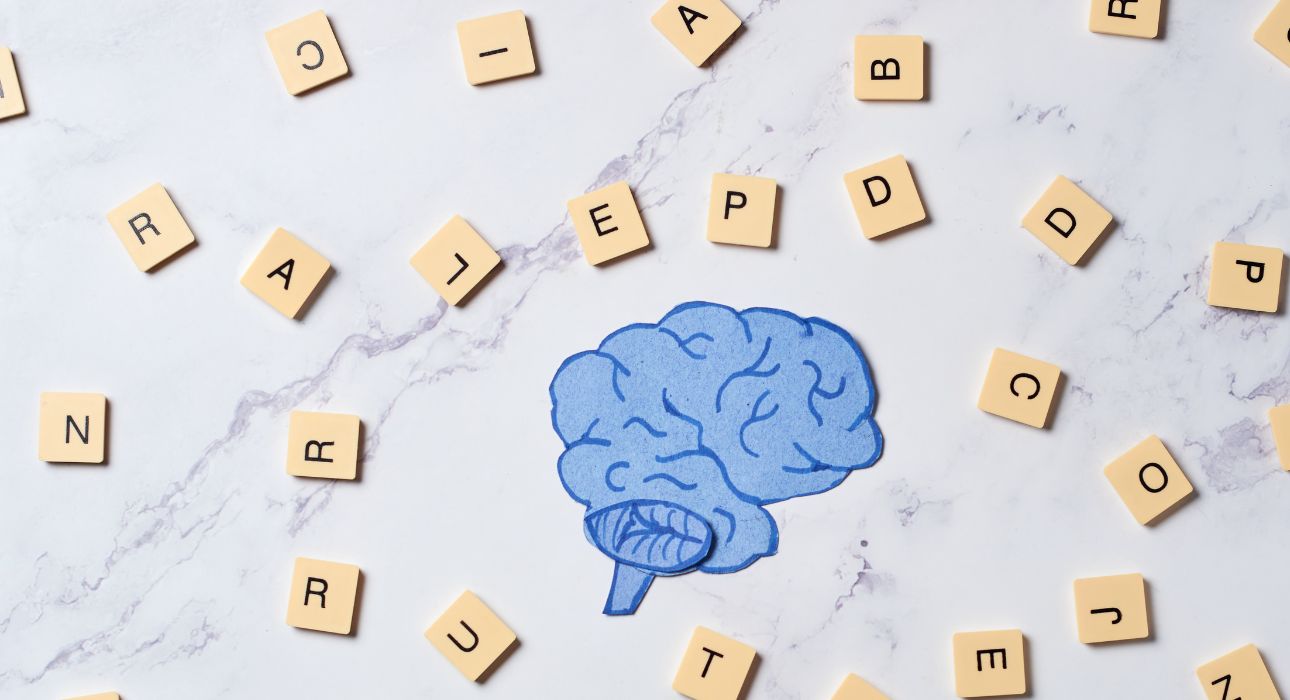Internally, we each possess a vast and intricate library-a repository of words, concepts, facts, and ideas collected throughout our lives. Psychologists and neuroscientists call such an internal library “semantic memory.” From this basis of understanding, one can recognise faces, understand speech, remember the dates of a historical event, and navigate the complicated web of everyday life. The definition, operation, and significance of semantic memory for human existence are examined in this article.


What is Semantic Memory?
Long-term memory in cognitive psychology is broadly divided into two classes: declarative and non-declarative memory systems. Declarative memory includes memories that can be consciously retrieved, such as episodic memories of particular personal experiences and semantic memories of the outside world. Information like facts, concepts, and general knowledge is stored in semantic memory.
It allows us to identify words and objects, understand language, carry out mathematical calculations, or comprehend cultural symbols. Think of semantic memory as a massive, well-organised library growing as you learn throughout your life. Whatever you have learnt in any part of the world may be retrieved directly from your internalisation. It is difficult to pinpoint when a particular fact was learnt since it will always be stored inside for retrieval when needed.
The Architecture of the ‘Library Within’
The semantic memory is structurally represented by a hierarchical and associative network. Concepts are linked to each other by these connections so that they might be retrieved quickly.


For example, the concept bird might be linked to such concepts as feathers, wings, and flight. The brain can retrieve the information intuitively and flexibly due to its associative nature.
Theoretically, spreading activation theory states that when a particular node (idea) becomes active, the connected nodes also become active, giving us the flexibility to combine various bits of information. Thus, focusing on the colour red suddenly had you thinking about roses or fire trucks.
The Neurobiology of Semantic Memory
A dispersed network throughout the brain is necessary for semantic memory. While no single area acts as its sole repository, certain regions play vital roles:


- Temporal Lobe: The anterior and inferior temporal lobes are necessary for storing and retrieving semantic knowledge, which, in general, words mean concepts, and words act as the ‘dictionary’ of the human brain.
- Hippocampus: The hippocampus, which has historically been linked to episodic memory, also contributes to the formation of new semantic memories before their long-term consolidation across cortical regions.
- Prefrontal Cortex: Supports semantic retrieval and the controlled access to stored knowledge, especially where ambiguities or context-dependent interpretations exist.
Functional neuroimaging and clinical examination of patients with damage to these areas (e.g., patients with semantic dementia) have demonstrated that lesions in the temporal lobe can selectively hinder access to conceptual knowledge, underscoring its critical role.
The Evolution and Importance of Semantic Memory
Abstract knowledge accumulation and utilisation, in the human evolution line, would have given humans an advantage. Our ancestors would have been able to remember and tell their members which plants were safe to eat, which places were good for hunting, and how to find their way through terrains. This evolved composite network permits us to learn languages, understand abstract ideas, and innovate across disciplines. Semantic memory allows the understanding of concepts that can directly contradict one’s own experience. For instance, we study ancient civilisations, learn theoretical physics, and comprehend the basics of ethics without ever having witnessed or practised any of these phenomena.
Semantic Memory in Daily Life
Daily, semantic memory manifests in innumerable ways, from simple conversations to critical decision-making situations:


- Language and Communication: Understanding and using words.
- Learning and Education: The basis of formal learning in different disciplines.
- Reasoning and Problem-Solving: The basis on which we can relate concepts.
- Social Interactions: Identifying individuals and comprehending cultural customs.
- Personal Identity: Shapes an individual’s idea of belonging to and making sense of the world.
It’s the reason, in our minds, we can hold the information, for instance, a hammer is for construction; a doctor for the heart is called a cardiologist; some foods have to be refrigerated.
Semantic Memory Changes Throughout Life


Beginning in early childhood, semantic memory steadily grows and reaches its peak strength in maturity. In contrast with episodic memory, it typically lasts longer in older persons. This resilience enables the majority of ageing individuals to retain general knowledge and language skills in the face of other cognitive declines. Yet, certain neurological conditions, such as semantic dementia or Alzheimer’s, may selectively impair semantic memory. These diseases remove access to the ‘internal library,’ thereby interfering with the ability to recognise everyday objects or understand meaning, yet episodic memories remain largely intact.
The Role of Semantic Memory in Education and Culture
Being shared, semantic memory is the means of knowledge accumulation and transmission over generations. Without it, handing down ideas or culture or introducing an innovation would be nearly impossible. At school or work, learners deploy semantic memory to connect the new information with what they already know, thus making education a cumulative and enriching experience. Culture depends upon the continuous input into this collective database by thousands of people, uninterrupted.
Nurturing and Protecting Semantic Memory
While semantic memory is remarkably resistant, it may require nurturance through active engagement throughout life. Here are some ways to keep that inner library alive:
- Reading and Continuous Learning: Exposing yourself to new ideas and disciplines strengthens connections between concepts.
- Mental Challenges: Exposing yourself to new ideas and disciplines strengthens connections between concepts.
- Social Interaction: Building conversations enriches understanding and consolidates semantic knowledge.
- Healthy Lifestyle: Activities like cardio training, good nutrition, and sleeping well will help keep your brain in good shape, indirectly aiding your semantic memory.
Why Semantic Memory Is Important
Semantic memory is at the core of all human desire for understanding and sharing knowledge. It helps us learn from the discoveries of others, adapt to new sets of circumstances, and sustain a feeling of belonging to a system of shared culture. Each person’s library within is its own unique reflection of interests, education, and life experiences. However, it is something universally human-the reminder of how we all share a collective understanding of the world.
Conclusion
The ‘library within’ is bigger than a repository of factual knowledge. It is rather a framework for us to understand reality and form relationships with each other. From recalling the simplest set of words to engaging with unfathomable notions, the semantic memory is, nevertheless, absolutely crucial for intellectual and emotional life.
One thing becomes clear as the structure and functioning of semantic memory continue to be investigated: the nurturing and preserving of semantic memory is essential for ourselves, communities, and future generations. In this regard, we would be paying homage to so many minds that walked before us in history and would be contributing some grains to the shifting landscape of human knowledge.
Read More from Us
- The Five Stages of Memory
- Synaptic Transmission: How Information Travels in the Brain
- Mirror Neurons and Their Role in Empathy and Imitation
- The Role of the Limbic System in Emotion and Behaviour
- The Role of the Prefrontal Cortex in Executive Functioning
- Key Differences Between Working Memory and Short-Term Memory
FAQs
1. What is semantic memory?
Long-term memory that retains facts, ideas, meanings, and general world knowledge—such as the definition of a cat, the proper way to use a spoon, or the meaning of words—is called semantic memory. It has nothing to do with individual experiences.
2. How is semantic memory different from episodic memory?
We use semantic memory to remember general knowledge and facts, whereas episodic memory draws on our personal events and experiences. Say you come to know the term “birthday” in semantic memory, but recalling your last birthday party depends on episodic memory.
3. What areas of the brain make up the semantic memory process?
Semantic memory functions through a network of brain areas, especially the temporal lobe for the storage of concepts, the prefrontal cortex for the retrieval of concepts, and the hippocampus for the formation of new competencies.
4. How does semantic memory help in everyday life?
Knowing a language allows one to identify objects, follow instructions, go to school, and socially interact. It allows individuals to think, talk, and make sense of this world.
5. Can semantic memory be enhanced or conserved during ageing?
Semantic memory can be maintained and enhanced through reading, learning new skills, solving puzzles, socialising, and staying healthy. All of the above will help you retain semantic memory with an increase in the rate of ageing.
References +
- Jones, M. N., & Avery, J. (2019). Semantic memory. Psychology. https://doi.org/10.1093/obo/9780199828340-0231
- Binder, J. R., & Desai, R. H. (2011). The neurobiology of semantic memory. Trends in Cognitive Sciences, 15(11), 527–536. https://doi.org/10.1016/j.tics.2011.10.001
- Metivier, A. (2024, October 14). How to Improve Semantic Memory: Boost your factual recall fast. Magnetic Memory Method – How to Memorize With a Memory Palace. https://www.magneticmemorymethod.com/semantic-memory/
- Cutler, R. A., Mirjalili, S., Pham, P., Devulapalli, H., Zafar, S., & Duarte, A. (2025). Semantic Memory Space Becomes Denser with Age. Neuropsychologia, 109083. https://doi.org/10.1016/j.neuropsychologia.2025.109083
- Denervaud, S., Christensen, A. P., Kenett, Y. N., & Beaty, R. E. (2021). Education shapes the structure of semantic memory and impacts creative thinking. Npj Science of Learning, 6(1). https://doi.org/10.1038/s41539-021-00113-8







Leave feedback about this